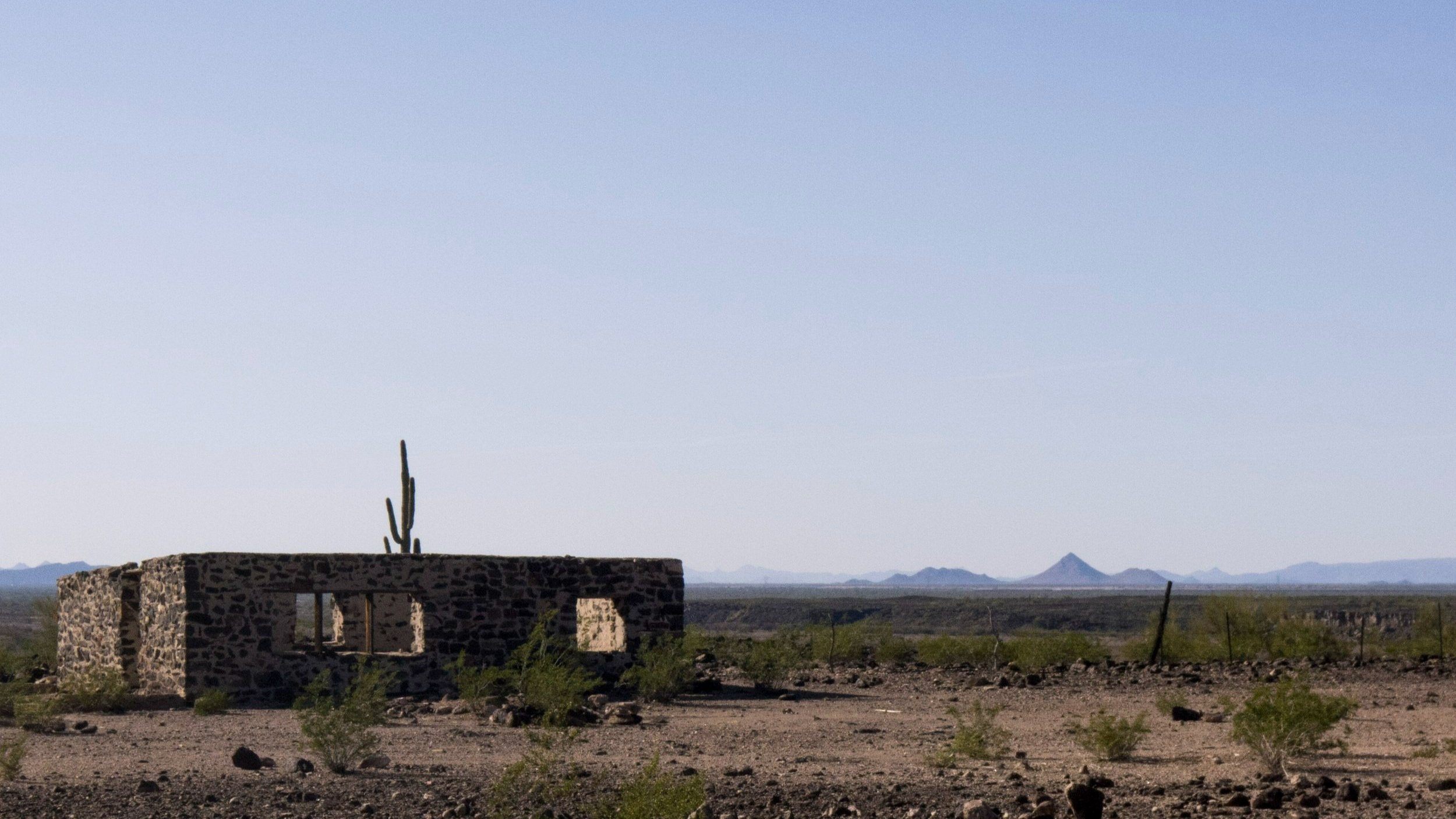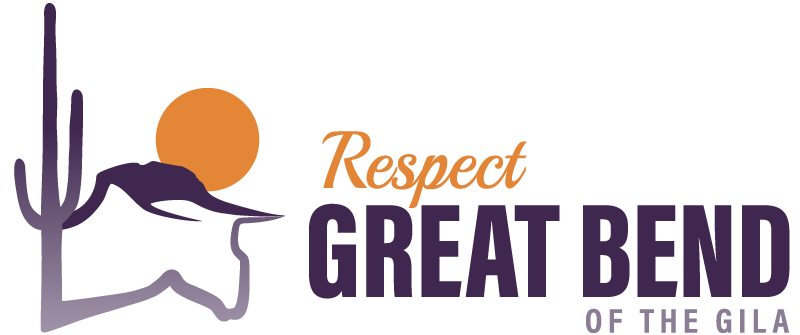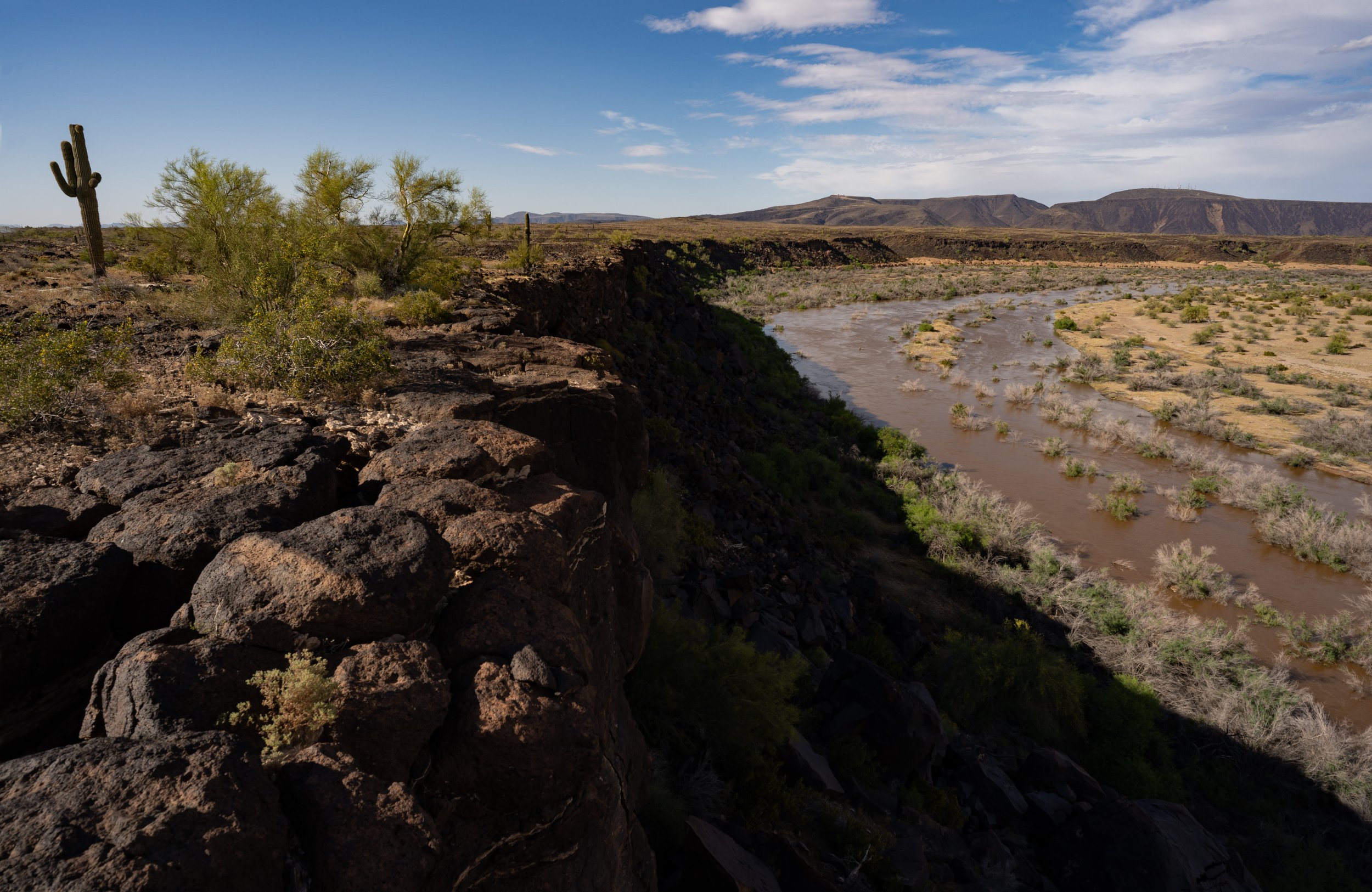
The Great Bend is an extraordinary nexus of natural, cultural, geological, and historical significance that has shaped much of the Southwest’s history and heritage.
As a national monument, the public lands of the Great Bend of the Gila would be protected in a way that recognizes their importance to Tribes, their cultural and historical values, and the role of these lands in species survival, combating climate change, and redressing water scarcity. A monument designation also opens the door for co-stewardship of the land between federal agencies and Tribes.
The stretch of river valley and surrounding desert between the cities of Phoenix and Yuma, Arizona, constitutes a fragile landscape that also serves as a backcountry recreation area for tourists and nearby residents. Protecting the Great Bend of the Gila also means protecting the recreation and economic opportunities for the region.
The Great Bend of the Gila will play a pivotal role in the future of the region in several interrelated ways. Preserving open space will sustain natural vistas and the scenic quality of the West Valley while also protecting the habitat and habitat connectivity that desert-dwelling animals such as bighorn sheep, Sonoran desert tortoise, mule deer, and javelina require for survival.
It’s time to permanently protect this inimitable, enduring, yet surprisingly sensitive landscape as a national monument. Although there are laws protecting cultural heritage on federal lands, permanent protection will help better enforce these laws. Given their historical and ongoing ties to the land, Tribes should have a strong voice in how this land and their legacies on it are managed in perpetuity.

Why the Great Bend of the Gila?
Respect Indigenous Inheritance
For millennia, Indigenous Peoples have called the Great Bend of the Gila home. Vibrant communities flourished thanks to the Gila’s life-sustaining waters. The descendants of these people include members of the Ak-Chin Indian Community, Cocopah Indian Tribe, Colorado River Indian Tribes, Fort McDowell Yavapai Nation, Fort Mojave Indian Tribe, Fort Yuma-Quechan Indian Tribe, Gila River Indian Community, Hopi Tribe, Pueblo of Zuni, Salt River Pima-Maricopa Indian Community, Tohono O’odham Nation, Yavapai-Apache Nation, and Yavapai-Prescott Indian Tribe.
Reflect on History
For millennia, communities flourished along the Great Bend. People from many different walks of life created a cultural landscape that merges archaeological and historical wonders in a remarkable natural setting. Families lived in villages and cultivated ancestral lands, leaving a variety of architectural signatures, including pithouses, adobe and stone buildings, ballcourts, and irrigation canals. This legacy of cultural diversity is literally written on the landscape in the form of tens of thousands of petroglyphs authored by Native Americans, with later additions by Spaniards, Mexicans, and Euro-Americans.
Protect Sonoran Desert Ecology
The Great Bend is a volcanic landscape that has been shaped by natural forces over millions of years. Today, it is part of the Sonoran Desert, which ranks first in biodiversity among the deserts of North America. The Great Bend serves as a travel corridor for animals crossing the Sonoran Desert. Critically important corridors and intact contiguous habitats are becoming rarer due to urban development.

What Threatens the Great Bend?
Regional population growth tied to metropolitan Phoenix increases recreational use of public lands. It also brings the threat of land “disposal” (sale of public land to developers) and conversion of natural open space to subdivisions. Planning for the protection of irreplaceable natural and cultural landscapes helps ensure people will be able to experience these places for generations.
Ongoing and rapidly expanding threats include:
Vandalism and theft of cultural resources
Irreparable damage to cultural resources due to target shooting
Impacts from unimpeded off-road vehicles to geoglyphs,
other cultural sites, cryptobiotic soils, plants, and animals
The potential for industrial energy development
Sale or transfer of public lands to private interests
Increased desertification driven by climate change
The “choking” of native vegetation by invasive plant species, such as tamarisk

Archaeological Resource Crime and ARPA
-
What constitutes Archaeological Resource Crime?
Archaeological Resource Crime (ARC) covers a wide range of prohibited acts including, but not limited to:
Excavation, damage, and removal of archaeological resources from Tribal or public lands without a permit;
Sale, exchange, and purchase of archaeological resources from Tribal or public Lands.
-
What is ARPA?
ARPA stands for the Archaeological Resources Protection Act of 1979. It is a federal law that protects archaeological resources on Tribal and public lands. Archaeological resources include all physical remains of human activity over 100 years old. Public lands include those managed by the National Park Service, the United States Forest Service, the Bureau of Land Management, and other federal agencies. Permanent protection of landscapes as National Monuments or National Conservation Areas helps with ARPA enforcement.
-
What are the consequences of committing an ARC?
Violations of ARPA lead to severe sentences and fines:
Prison time of up to 2 years for the 1st offense and up to 5 years for further offenses.
Fines of up to $250,000 dollars for felony violations.
Fines of up to $100,000 dollars for misdemeanor violations.
Forfeiture of the vehicles and equipment used in the crime.
Other civil penalties.

How Will Enhanced Federal Protection Help?
These proposed boundaries for a Great Bend of the Gila National Monument. Signal Mountain and Woolsey Peak Wilderness Areas currently exist already.
Federal protections in the form of a national monument will benefit:
-
Tribes
The Great Bend of the Gila proposal is unique in terms of planning process and vision, both of which are linked to Indigenous Peoples’ values, preferences, and interests. A key component of this monument proposal is ongoing engagement with Tribes as to how to best manage these lands.
-
Businesses
A study from this past decade found that current operation and visitor spending associated with the Great Bend of the Gila (GBG) area in Arizona’s Maricopa and Yuma Counties provides benefits to the local economy and generates tax revenue for local governments. Many local elected officials and stakeholders support the GBG area for greater protections because of the quality-of-life and economic benefits designation could provide.
-
Recreationalists
Designation as a national monument will expand awareness of the extraordinary historical and cultural resources contained in the proposal area, thereby drawing interest and visitation. Changes in visitation and tourism expenditures are especially important in rural areas such as the Gila Bend region, where people may be particularly reliant on income derived from tourism. Further, monument designations direct land management to be preservation focused, which leads to high-quality backcountry recreational experiences. Wilderness designation is particularly suited to providing opportunities for solitude and quiet recreation.
-
Biodiversity
The Great Bend of the Gila is part of the Sonoran Desert, which ranks first in biodiversity among the deserts of North America. The landscape serves as core habitat for species such as the endangered Sonoran pronghorn, mule deer, Desert bighorn sheep, javelina, Le Conte’s thrasher, and others. These desert-adapted species require large habitat areas to survive. As urban development has fragmented and destroyed habitat, and as climate change alters the ecological functioning of the area, these species also require connectivity across the landscape—to access water sources, to follow forage or mates, and to escape human pressures.
-
Deep History
For a millennium, people took advantage of the Gila’s reliable water and fertile soils. They cultivated fields of corn, beans, and melons, and later they would also grow wheat. Archaeological surveys have documented year-round settlement and floodwater farming beginning as early as 675 CE. There is archaeological evidence of people being in the region going back to about 13,000 BCE. Signs of this deep and meaningful history—petroglyphs, geoglyphs, settlements, trails—lay bare for all to see. But this visibility is also a vulnerability, and these places are constantly threatened with vandalism, defacement, and outright destruction. Respectful and permanent protection means deterring these threats so that this legacy on the land remains for us to appreciate and learn from well into the future.
-
Future Generations
Local communities, Tribes, conservationists, and elected officials have long recognized the need to protect these lands, and they have advocated for greater protections for this region. Although the specific initiatives and boundaries have changed slightly over time, the values themselves and the goal of permanent protection have remained constant.

How You Can Help
Stay Informed.
Stay in the loop to find out how you can help protect the Great Bend of the Gila, now and in the future.
Subscribe to Our e-Newsletter
Sign up to receive email updates about the campaign to protect the Great Bend of the Gila, and what you can do to help.
Follow Us
Keep up with the latest on Twitter, Facebook, and Instagram, and share our updates with your friends and family.

Make your voice heard and help protect this special place.
Landing Page Background Photo: Dawn Kish








